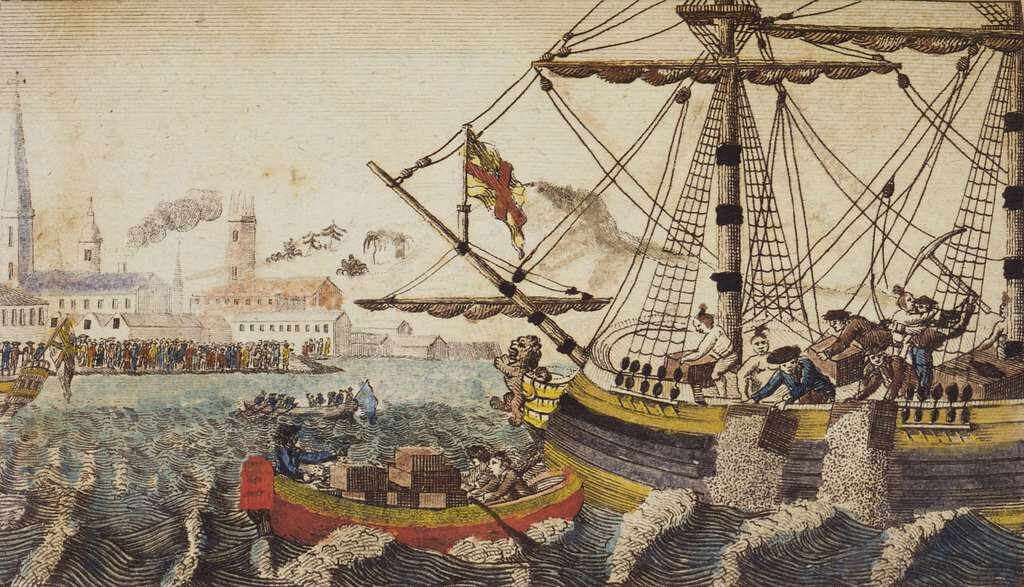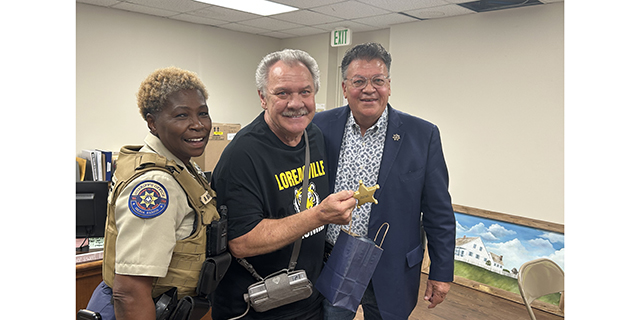A look back at the Boston Tea Party
Published 2:59 am Sunday, December 24, 2023

- The Boston Tea Party was a response to the 1773 Tea Act.
It was an act that became synonymous with American resistance. But it was based on a principle that helped build our American democracy.
Saturday, Dec. 16 marked the 250th anniversary of the Boston Tea Party, when angry colonists dumped dozens of chests of tea into the Boston harbor in one of the more dramatic moments leading up to the American Revolution. The tea party has become etched in American lore, and is often referenced in protests against government or big business.
The origins of the Boston Tea Party arose from a familiar mantra of colonial protestors – “taxation without representation,” since the colonists were allowed no representatives in the British Parliament. Much of the colonists’ ire was directed at the Townshend Acts, a series of moves by the British government to tax the colonies, including a tax on tea.
Tea was a beloved part of colonial American culture, and the British government knew it. American colonists consumed 1.2 million pounds of tea a year – a substantial amount for a population of just under 2.5 million.
The tax on tea grew into a 1773 act which gave the British East India Company a monopoly in the colonies. Several leading colonists, including John Hancock and Samuel Adams, orchestrated smuggling rings for tea, though the cost of smuggled tea was eventually higher than the East India Company product. Not true to the name of the company, the British were frequently selling tea from China.
The Sons of Liberty, a group of merchants and men of trade who espoused the patriotic cause, loudly protested the various taxations. By December 1773, the rampant tensions boiled over as three ships loaded with tea sat in Boston harbor. The colonists vociferously refused to pay the taxes on the tea, or allow it to be unloaded.
The standoff set Boston abuzz as the Sons of Liberty and other patriots clashed with the loyalists of the city. In turn, Massachusetts Gov. Thomas Hutchison, a loyalist, ordered the taxes to be paid, and the cargo unloaded.
Various meetings, some public and others in secret, were held to dispute the tea tax. The largest was a public assembly at the Old South Meeting House in Boston on Dec. 16, 1773, which spilled over into the legendary events at the harbor.
Many of the facts of the Boston Tea Party are debated today. Credible research shows that hundreds of colonists participated, many of them disguised as Mohawks or other American Indian tribes.
The crude disguises were intended to reveal their identities, as the Sons of Liberty and their supporters risked arrest and incarceration. The costumes also were a form of expression, as the colonists wanted to portray themselves as Americans, no longer viewing themselves as subjects to the crown.
In three hours, an estimated 340 chests of tea, totaling 92,000 pounds, on the three ships were smashed open by axes, then dumped into the water. One source equates the loss to over 18.5 million cups of tea. In today’s dollars, the value was $1.7 million. A total of five different kinds of tea – all from China – was destroyed.
Otherwise, no damage was done to the ships, save for one broken padlock. Contrary to popular belief, the vessels were actually owned by Americans – not the British. The cargo of tea in each ship, however, was property of the British.
Participants even swept the decks of the ships after dumping the tea, and moved all objects into their proper place. Many in the Boston Tea Party simply went home afterward. No looting or thievery of anything on the ships, including the tea, was allowed.
One participant recalled that “we were surrounded by British armed ships, but no attempt was made to resist us.” The massive amount of tea in the water left a lingering odor for weeks.
Colonial leaders were actually split in their reaction. In his diary on the following day, John Adams called the tea party a “magnificent movement…this destruction of the tea is so bold, so daring, so firm, intrepid, and inflexible, and it must have important consequences.” George Washington, on the other hand, privately criticized the tea party.
The British government retaliated by closing down Boston Harbor until the dumped tea was paid for. The move was made under a new set of laws infamously dubbed the “Intolerable Acts.” Benjamin Franklin, who also disdained the tea party, offered to cover the bill himself, hoping that the harbor would be re-opened.
The Intolerable Acts led to the organization of the First Continental Congress in 1774, and inflamed American protests. Many believe that the Boston Tea Party was a flashpoint in tensions that led to the Revolutionary War, which lasted from 1775-83.
No one was charged in the Boston Tea Party, in part because the costumes hid the true identities of the participants. A 2012 study found that at least ten smaller tea parties followed, including in Philadelphia and Charleston, S.C. A second tea party in Boston in March 1774 dumped sixteen more chests of tea into the harbor.
The actual location of the party is now a Boston street corner, as modern engineering has filled in portions of the harbor. The term “Boston Tea Party” did not arise until the early 1820s, though the words are often used today in conjunction with government protests.
Re-enactments of the Tea Party were being planned as part of a large-scale commemoration in Boston. Activities include a re-creation of the gathering at the Old South Meeting House, a charming, interactive tradition that has been broadcast on C-SPAN in recent years.
(TOM EMERY may be reached at ilcivilwar@yahoo.com)





